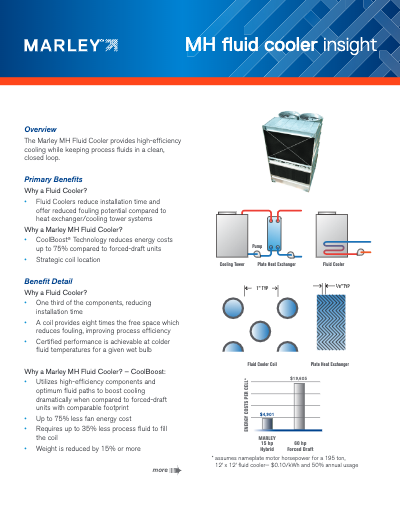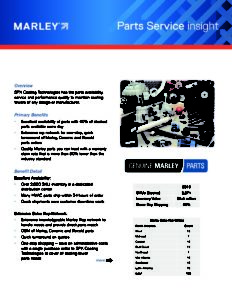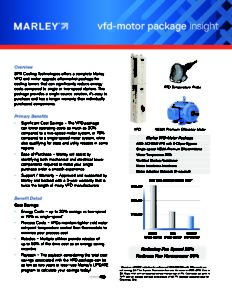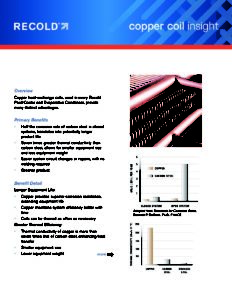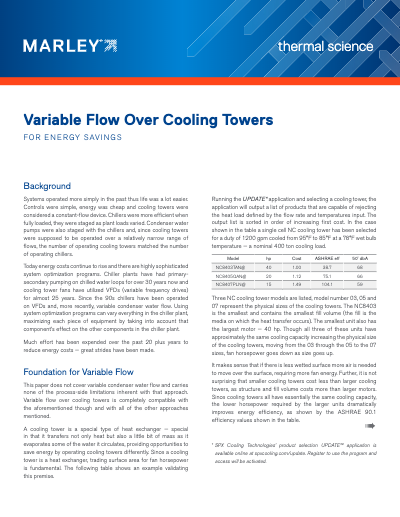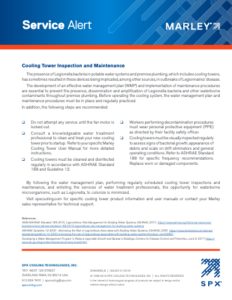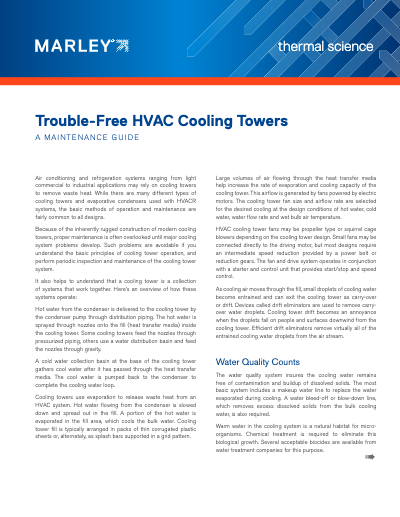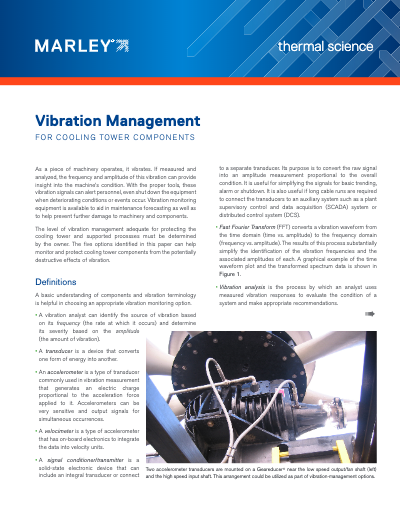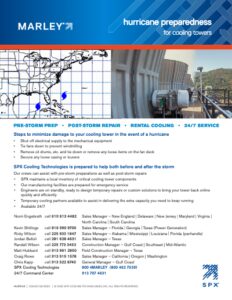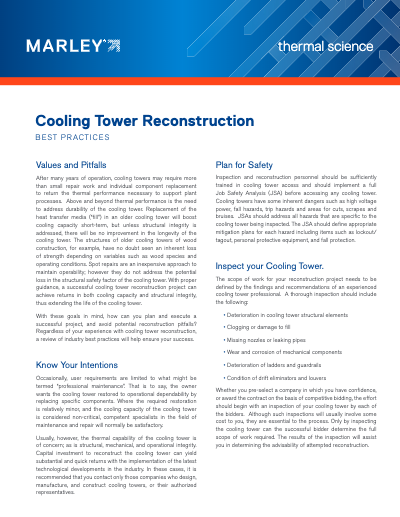Marley Insight – MH Flüssigkeitskühler
Der Marley MH-Flüssigkeitskühler sorgt für hocheffiziente Kühlung und hält die Prozessflüssigkeiten gleichzeitig in einem sauberen, geschlossenen Kreislauf.
Marley Insight – Ersatzteilservice
SPX Cooling Technologies verfügt über die erforderliche Ersatzteilverfügbarkeit, den erforderlichen Service und die erforderliche Leistungsqualität, um Kühltürme jeder Bauart und jedes Herstellers zu warten.
Marley Insight – VFD-Motorpaket
Marley bietet ein komplettes VFD- und Motor-Upgrade-Aftermarket-Paket für Kühltürme an, das die Energiekosten im Vergleich zu ein- oder zweistufigen Startern erheblich senken kann.
Variabler Durchfluss über Kühltürme
Wenn der Kühlturm außerhalb der Spitzenzeiten mit variablem Durchfluss betrieben werden kann, ergeben sich möglicherweise erhebliche Möglichkeiten zur Energieeinsparung. Der variable Durchfluss ist eine Möglichkeit, die Effektivität der installierten Turmkapazität für jeden Durchfluss des Prozesses zu maximieren.
Service-Meldung
Wartungsverfahren, die eine Vermehrung und Verbreitung von Legionellen und anderen luftgetragenen Bakterien verhindern, sollten VOR dem Betrieb der Systeme formuliert und umgesetzt und danach regelmäßig fortgesetzt werden, um das Risiko von Erkrankungen oder Todesfällen zu vermeiden.

